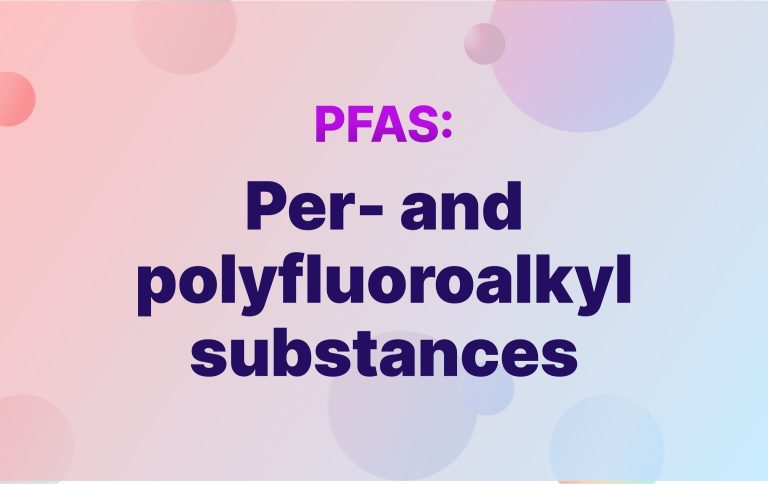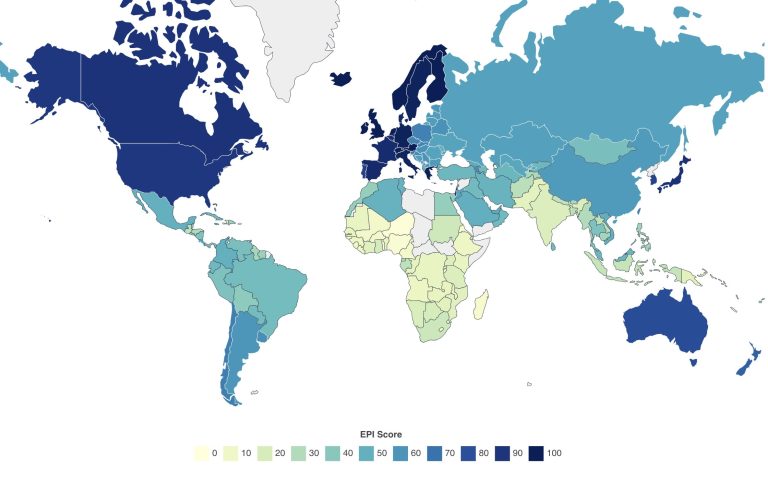Defining PFAS, PFOA, and PFOS
Per- and polyfluoroalkyl substances (PFAS) include thousands of synthetic chemicals. Among these, PFOA (perfluorooctanoic acid) and PFOS (perfluorooctane sulfonate) are notable. These chemicals, known for their resistance to water, oil, and heat, have been widely used in applications such as non-stick cookware, stain-resistant fabrics, and waterproof clothing. While part of the PFAS group, the difference between PFOA and PFOS, compared to other PFAS, is their unique chemical structures and applications (Cancer.org).
Environmental Persistence and Impact
PFAS are called ‘forever chemicals’ because they persist in the environment and are hard to degrade. PFOS was widely used in stain, grease, and water-resistant products. Due to health risks, several countries have regulated its use. However, it is still found in many developing nations, showing the global challenge of managing these substances. PFOA, also phased out due to health concerns, continues to pose risks from past usage. Both chemicals impact the environment, affect ecosystems, and contaminate tap water sources worldwide.
Exposure and Accumulation of PFAS
People encounter PFAS through contaminated water, air, and treated products. These chemicals can build up in the human body over years, potentially leading to health issues. The risk varies based on proximity to manufacturing sites, water contamination levels, and lifestyle. Even though the production of certain PFAS like PFOA and PFOS has ended, their durability means they remain a concern for years. Their persistence underlines the difficulties in reducing exposure and mitigating health risks (EPA).
Global Regulations and Restrictions
Efforts to control PFOS and PFOA use have led to worldwide regulations:
- In September 2020, the European Food Safety Authority (EFSA) set a new safety threshold for substances including PFOS and PFOA.
- The EPA proposed regulatory determinations for PFOS and PFOA. They established individual Maximum Contaminant Levels (MCLs). Other chemicals like PFHxS, PFNA, HFPO-DA, and PFBS were assessed using a Hazard Index.
- Through the 2010/2015 PFOA Stewardship Program, the EPA ended the domestic production and import of PFOA in the United States.
- The EPA also issued Significant New Use Rules (SNURs) for PFOS and PFOA. These rules require notification before any new manufacture or import of these chemicals.
Source: ECHA

Overview of PFAs Chemicals and Their Environmental Impact
Overview of PFAS Chemicals
Perfluoroalkyl and polyfluoroalkyl substances (PFAS), including chemicals produced by companies like 3M and DuPont, are synthetic chemicals used since the 1940s in various industrial and consumer products. They are known as “forever chemicals” because they persist in the environment and the human body. PFAS include compounds such as PFOA (perfluorooctanoic acid) and PFOS, with significant attention on their health risks and environmental impact. Their resistance to water, oil, and heat made them popular in products like nonstick cookware, which now strives to be PFOA free. in products like non-stick cookware, waterproof clothing, and firefighting foams. However, the impact of these chemicals on health and the environment has become a growing concern.
Environmental Impact
PFAS do not naturally degrade, allowing them to accumulate in water, soil, air, and living organisms. This leads to widespread contamination, even in remote areas. Their durability presents challenges for wildlife by disrupting ecosystems and harming species.
Human activities, such as industrial manufacturing, use of PFAS-containing products, and improper disposal, have increased environmental contamination. Drinking water sources near manufacturing facilities or military bases using PFAS-based foams are especially at risk. This contamination, especially in drinking water, is a direct route for PFAS to enter the human body, emphasizing the dangers of PFAS and underlining the health advisories regarding PFAS contaminant levels.
Efforts to reduce the impact of PFAS and address the PFAS problem include regulatory actions and the development of PFAS-reach strategies. and the development of advanced filtration technologies. However, the chemical resilience of PFAS means that addressing their environmental legacy will need sustained effort.

Health Effects of PFAS Exposure
PFAS exposure, through sources like drinking water and food packaging, can lead to health issues such as bladder cancer, thyroid disease, and changes in liver function.
- Cancer
- Higher cholesterol
- Lower birth weights
- Lower immune responses to vaccines
- Kidney and testicular cancers
- High blood pressure in pregnancy
- Changes in liver function
- Increased risk of airway and throat infections
- Diarrhea
These health concerns highlight the need to reduce PFAS exposure and address contamination.
Treatment and Filtration Technologies
The most effective consumer water filtration systems for removing PFAS are reverse osmosis filters and granulated activated carbon systems. Effective treatments and filtration technologies for combating PFAS in drinking water include:
- Reverse osmosis water filter systems
- Nanofiltration membranes
- Granulated Activated Carbon (GAC) filtration systems
- Under-sink models like the Brondell Coral UC300 Three Stage and Aquasana AQ-5200
- Water filters certified for PFAS reduction
- Activated carbon filters
- Regular maintenance of water treatment units
These technologies can significantly lower PFAS levels in water, reducing exposure risks.

Global Regulations and Restrictions on PFAS
As of 2023, various countries and regions have implemented regulations to control PFAS use and disposal:
| Country/Region | Regulation/Standard | Year Implemented |
|---|---|---|
| United States | Final Rule under TSCA for reporting PFAS information | 2023 |
| United States | National Enforcement and Compliance Initiatives for PFAS | 2024-2027 |
| United States | Proposed regulations under the Resource Conservation and Recovery Act for PFAS pollution | 2023 |
| European Union | ECHA restriction proposal for PFAS in firefighting foams | 2022 |
| European Union | Pending decision on ECHA’s restriction proposal for PFAS | TBD |
Regulations, including setting maximum contaminant levels (MCLs) by entities like the EPA, show a growing effort to manage PFAS and protect public health and the environment.
For more information on PFAS regulations, you can visit the US EPA and Collins Law.

Health Risks Associated with PFOA and PFOS Exposure
Exposure to PFOA and PFOS, part of the broader group of PFAS chemicals, comes with significant health risks. These substances persist in the environment and the human body. It’s vital for individuals and communities to understand these risks to take preventative measures.
Cancer Risks
There is evidence linking exposure to PFOA/PFOS with an increased risk of certain cancers. The International Agency for Research on Cancer (IARC) classifies PFOA as “carcinogenic to humans” (Group 1). This classification is primarily based on animal studies. PFOS is considered “possibly carcinogenic to humans” (Group 2B), indicating weaker evidence of its cancer-causing potential. Read more from the American Cancer Society here.
PFOA and PFOS can remain in the human body for years, leading to elevated blood levels and increased risk of health issues such as thyroid disease and liver tumors. The average half-life of PFOA ranges from 0.12 to 2.91 years. PFOS has a similar half-life, estimated to be around 2.86 to 2.91 years. Some isomers of PFOS have shorter half-lives.
Efforts to minimize exposure include:
- Regulating contaminated sites.
- Avoiding products known to contain PFAS.
- Using water filters that can remove some PFAS compounds from drinking water.
Public health advisories and regulatory guidelines focus on minimizing risks by limiting exposure levels and informing communities about the dangers of PFAS. Detailed health implications can be found on the EPA’s site.





